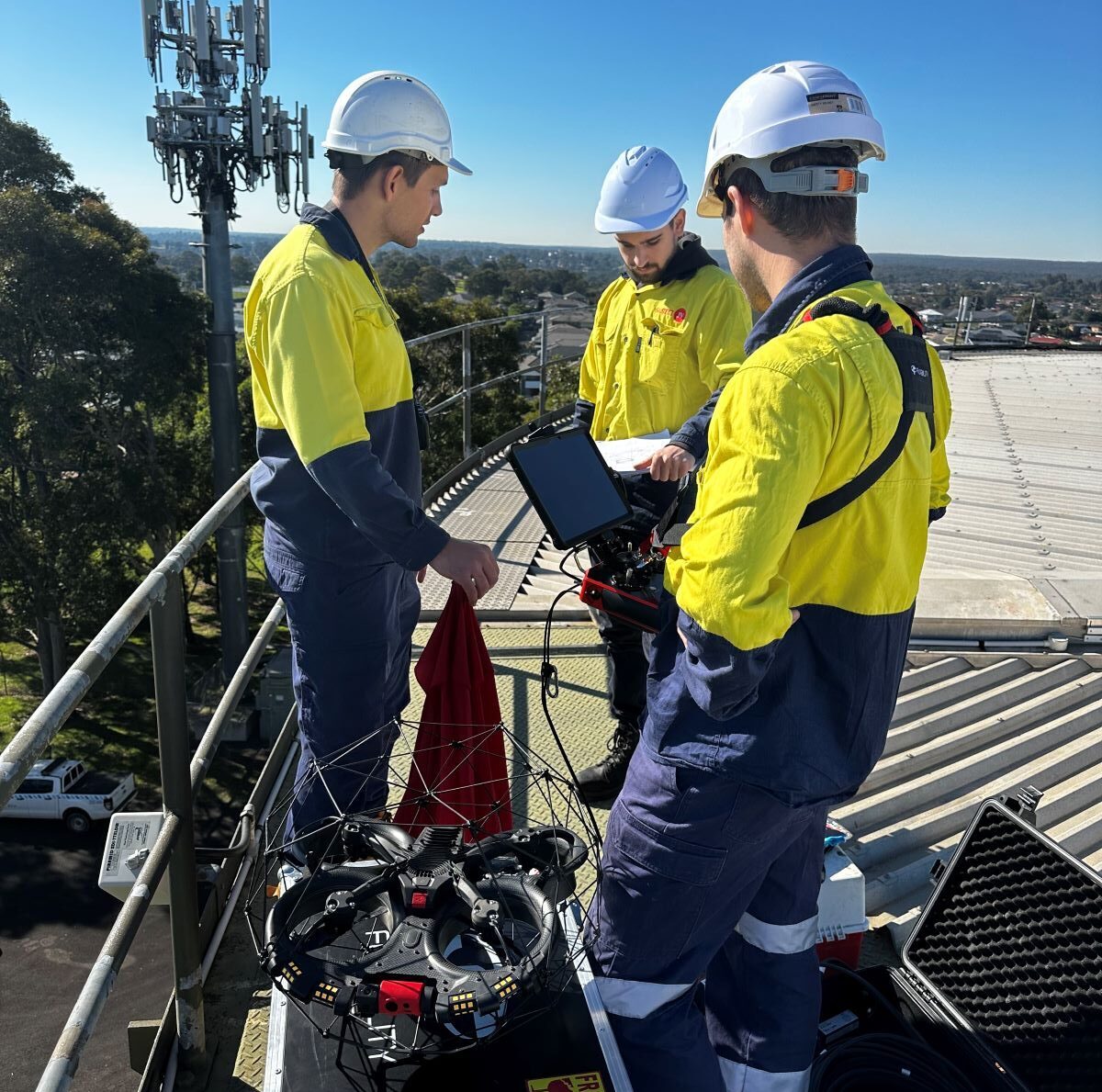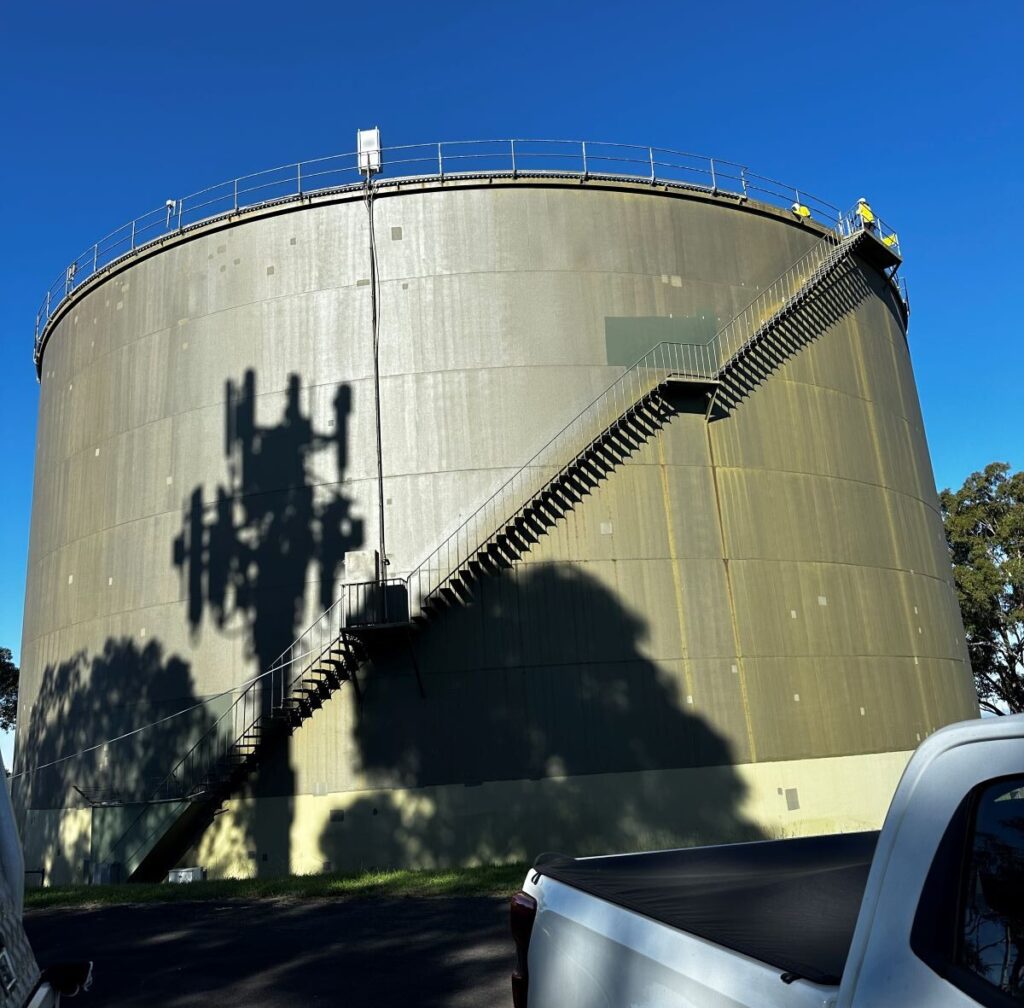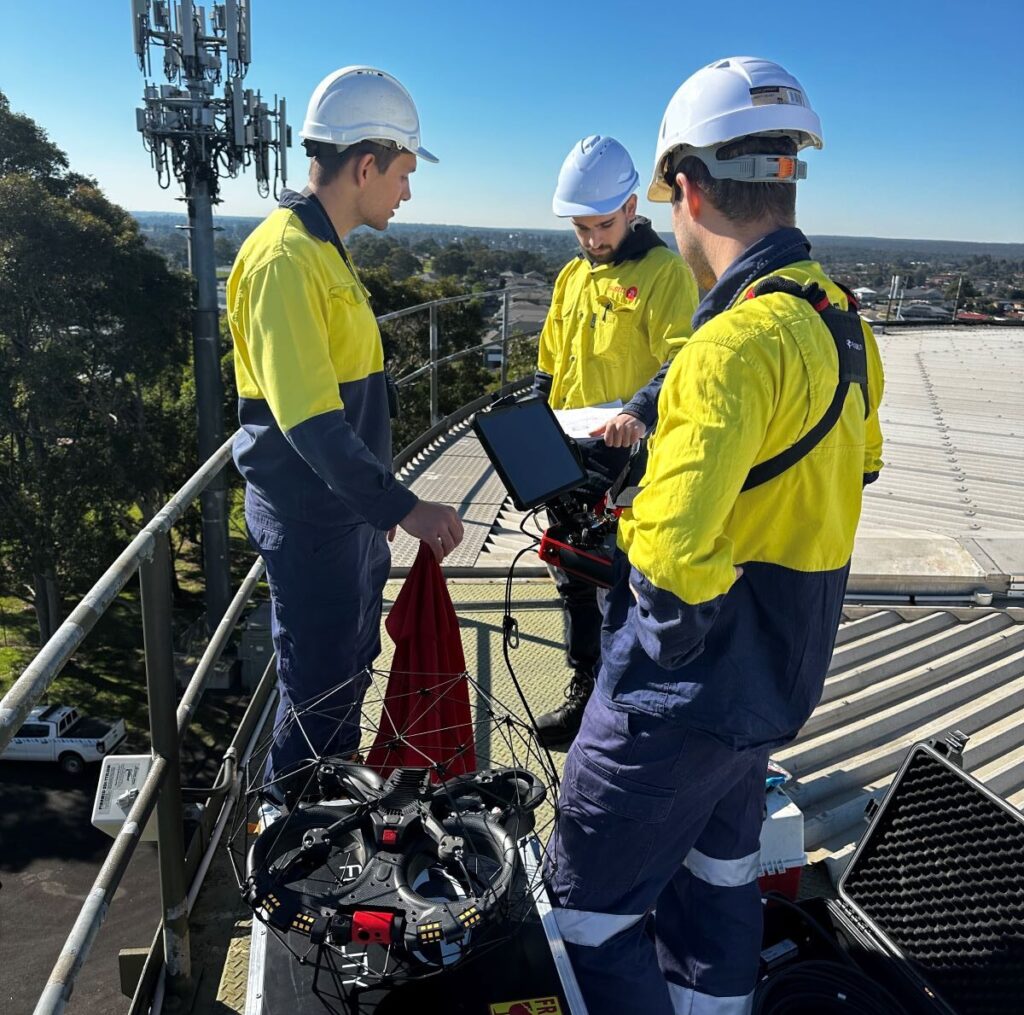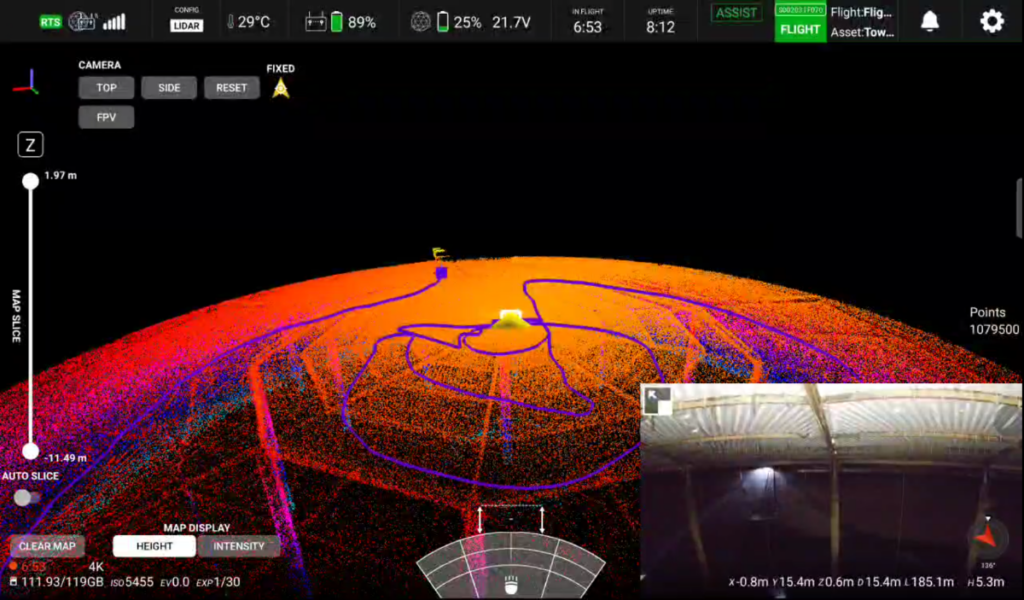
Drone-Based Condition Assessment of a Sydney Reservoir
Introduction
There are always challenges that come with manual accessing and inspecting of hazardous and confined spaces. To overcome many of these obstacles we leveraged advanced drone technology. For an above ground water tank of a Sydney reservoir, our drones enable us to perform a critical condition assessment.
Our adoption of innovative drone solutions has allowed us not only to enhance the efficiency and safety of our project but also set a new standard for precision in complex infrastructure inspections.

The Challenge
The project aimed to provide high-quality imagery for the condition assessment of the reservoir, a task traditionally performed by ROV divers. However, the depth and clarity limitations of ROV technology often resulted in suboptimal data quality.
Additionally, traditional methods of using boats required entry into hazardous and confined spaces, posing safety risks and logistical challenges. The goal was to overcome these limitations and improve the quality and safety of the data collection process.
Solution
We applied a sophisticated drone-based inspection system as a safer and more effective alternative. The drone was equipped with high-definition 4K cameras and powerful LED lighting to navigate the poorly lit reservoir and capture detailed imagery of the above-water structures.
The project required precise manoeuvring, hence needed multiple flights to ensure comprehensive coverage and data accuracy. This method eliminated the need for human entry into hazardous areas and significantly reduced the dependency on manual processes.

Outcome
The deployment of these cutting-edge technologies has transformed the way we approach concrete tunnel remediation:
- Enhanced Safety and Consistency: The automation of surface preparation tasks has significantly minimised safety hazards associated with high-pressure operations, while ensuring a consistent quality of surface treatment across extensive tunnel sections.
- Reduced Environmental Impact: By eliminating water use and reducing diesel consumption, our methods have set new standards for environmental responsibility in tunnel remediation. Our innovation has reduced the use of diesel by 150 litres / day and water usage from 36,000 litres / week to no water required.
- Superior Efficiency: These technological enhancements have streamlined our operations, allowing us to complete projects faster and with fewer resources, thereby reducing overall project costs.

Conclusion
Our dedication to innovation in concrete remediation not only enhances the structural integrity and longevity of these crucial infrastructures but also underscores our commitment to safety and environmental sustainability.
By continuously advancing our technology and techniques, we provide our clients with superior solutions than competitors. This enables us to access, inspect, and repair critical infrastructure, no matter where or how hard.
Our approach to tunnel remediation exemplifies our broader commitment to leading the industry with smart, safe and sustainable solutions.